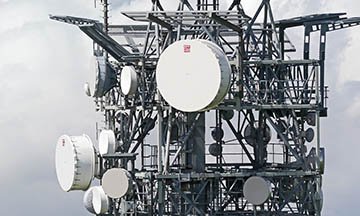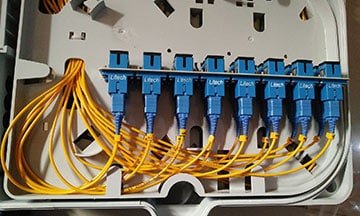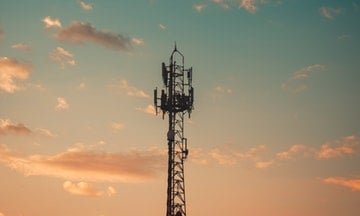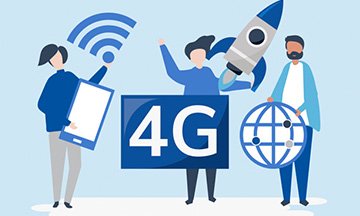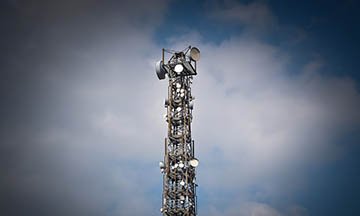LTE Broadcast (eMBMS/CMAS/ETWS/SIB)
| Date | Venue | Duration | Fees | |
|---|---|---|---|---|
| 27 May - 31 May, 2024 | Dubai | 5 Days | $4750 | Register |
| 10 Jun - 14 Jun, 2024 | Dubai | 5 Days | $4750 | Register |
| 08 Jul - 12 Jul, 2024 | Dubai | 5 Days | $4750 | Register |
| 29 Jul - 02 Aug, 2024 | New York | 5 Days | $5695 | Register |
| 19 Aug - 23 Aug, 2024 | Abu Dhabi | 5 Days | $4950 | Register |
| 19 Aug - 23 Aug, 2024 | Dubai | 5 Days | $4750 | Register |
| 02 Sep - 06 Sep, 2024 | Dubai | 5 Days | $4750 | Register |
| 30 Sep - 04 Oct, 2024 | Dar Es Salam | 5 Days | $4950 | Register |
| 07 Oct - 11 Oct, 2024 | Dubai | 5 Days | $4750 | Register |
| 04 Nov - 08 Nov, 2024 | Dubai | 5 Days | $4750 | Register |
| 12 Nov - 14 Nov, 2024 | Doha | 3 Days | $4100 | Register |
| 16 Dec - 20 Dec, 2024 | Dubai | 5 Days | $4750 | Register |
Course Overview
With the Advent of 4G Long Term Evolution (LTE) in last few years, broadcast services like video streaming (Netflix, Prime Videos etc) have added value to mobile communication networks. With superhigh speeds of LTE it has become possible to achieve streaming services available at a very cheaper rates. This course will provide a good understanding of the engineering background of broadcast network and how they can be integrated with the existing LTE networks to enhance is quality to a further next level.
Course Objectives
The main objective of this training course is to empower delegates with—
- a complete understanding of the technological evolution of LTE and Broadcast networks.
- knowledge of comparison between video broadcast network services on commercial LTE networks.
- Complete understanding of Broadcast networks over LTE network with respect to its architecture channel structure and its security aspects.
- How the network performance is monitored in the broadcast networks with LTE
Training Methodology
Zoe Talent Solutions delivers training in various ways, depending on the topic and audience. The training format includes audio/video presentations, group debates and activities, case study discussions, group experiential learning activities, role-plays, etc. The trainer also elaborately discusses practical issues and challenges faced by the trainees at their respective workplaces to help trainees relate and apply the information and knowledge gained through the course in their role and work profile.
This course is delivered as per Zoe Talent Solutions’ consistent and highly successful Do–Review–Learn–Apply Model.
Organisational Benefits
Organisations whose employees undertake this course will benefit in the following ways:
- Appropriate performance management systems to track performance, identify required training and development and upskill employees to the required standards
- A more equipped, high-performing, highly accountable, engaged workforce
- Highly efficient and good quality engineers to the organization as a result of smarter and more accountable telecom professionals
- Greater customer satisfaction for Video Broadcasting services on LTE networks.
- A more performance-driven, customer-oriented, aggressive work culture
Who Should Attend?
Organisations whose employees undertake this course will benefit in the following ways:
- Engineers currently working on commercial LTE network and wants to extend their knowledge on how broadcast services can be integrated with LTE networks
- Engineers working on communication/Entertainment/news Industry etc and using any broadcast networks and wants to know how they can integrate this hybrid solution of Video Broadcast over LTE.
- Technical project lead and managers
- Top level management
Personal Benefits
Through this course, telecom professionals will benefit in the following ways:
- Complete awareness of public safety networks and there evolution to LTE Broadcast services
- Increased sense of engagement and ownership towards one’s role and responsibilities
- Appropriate platform to perform optimally in one’s role and also create opportunities to upskill and undertake additional roles and responsibilities
- More organised, transparent and clear growth path through efficient and appropriate performance management fostering faster progression
- Increased exposure to build accountability and customer orientation, two most important professionals traits in any sphere of work
Course Outline
- eMBMS Overview
- Introduction
- Basic Definitions
- Related Concepts
- Benefits
- Architecture
- Architecture Overview
- Functions of the Interfaces Related to the E-UTRAN
- eMBMS Technical Description
- eMBMS Overview
- MBMS Service Delivery Principles
- Introduction to Channels
- Overall Procedure of MBMS Service Provision
- Resource Specifications
- List of Key Techniques
- Channel and Session Management
- eMBMS-related Channels
- Logical Channel
- Transport Channel
- Physical Channel
- Radio Resource Allocation for Channels
- Key Phases in MBMS Session Management
- Session Start
- MBMS Notification and Acquisition
- Session Stop
- eMBMS Planning and Dimensioning
- Synchronization
- Radio Resource Management
- MBMS Session Admission Control
- Data Preparation
- MBMS Service Planning and Configuration
- Related Features (Multi-vendor)
- Synchronization with GPS
- IEEE1588 V2 Clock Synchronization
- SCTP Multi-homing (optional)
- eMBMS Network Impact
- When to Use eMBMS
- Required Information
- Precautions
- Activation
- Activation Observation
- Reconfiguration
- Deactivation
- Performance Monitoring
- Monitoring eMBMS performance on an eNodeB
- Monitoring eMBMS performance on an MCE
- Parameter Optimization
- Alarm Troubleshooting
- All related Parameters Glossary
- All related Counters Glossary
- ETWS/CMAS Overview
- Introduction to ETWS/CMAS
- Benefits/Requirements
- Architecture
- ETWS/CMAS Technical Description
- ETWS/CMAS Warning Notification Type
- ETWS/CMAS Notification Area
- ETWS/CMAS Warning Notification Broadcast Procedure
- Warning Notification Broadcast Procedure
- ETWS/CMAS Processing in eNodeBs
- Related Features (Multi-Vendor)
- 3GPP R9 Specification
- Broadcast of system information
- Physical Channel Management
- ETWS/CMAS Network Impact
- When to Use ETWS/CMAS
- Required Information
- Planning and Dimensioning
- Deployment , Requirements
- Data Preparation
- Precautions
- Activation
- Activation Observation
- Reconfiguration
- Deactivation
- Performance Monitoring
- Parameter Optimization
- Troubleshooting
- Parameters
- Counters
